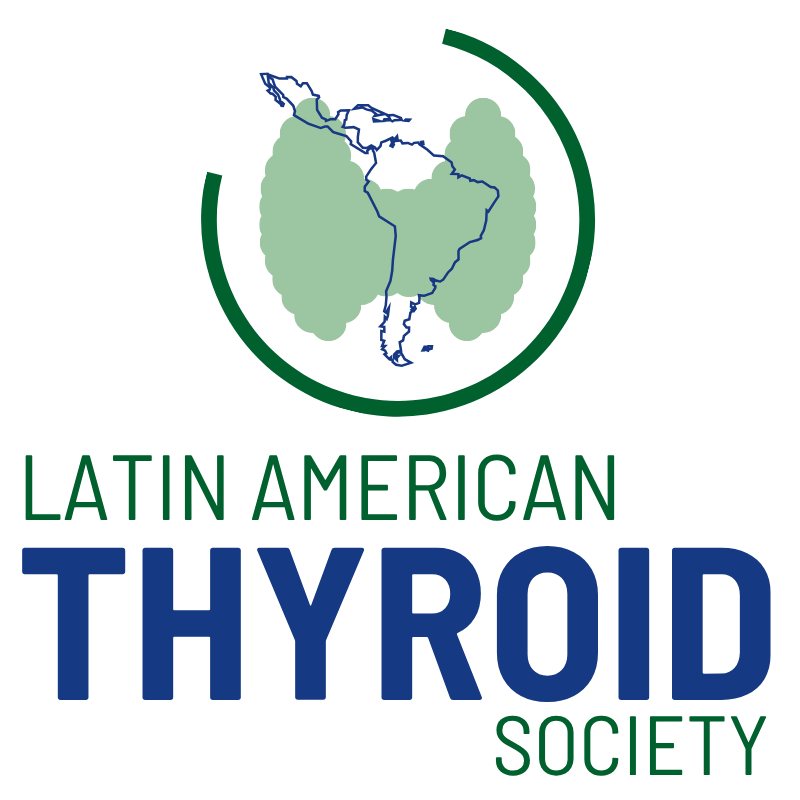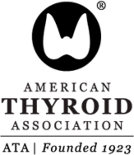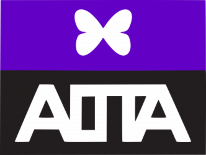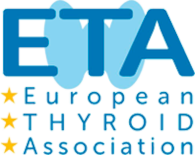LATS Young Investigator Awards

Diego Claro de Mello
Inhibition of EZH2 methyltransferase activity induces an antitumoral effect and
improves cell differentiation in anaplastic thyroid cancer
Diego Claro de Mello 1, Marcella Maringolo Cristovão 1, Kelly Cristina Saito 1, Edna
Teruko Kimura 1, Cesar Seigi Fuziwara 1.
Department of Cell and Developmental Biology. Institute of Biomedical Sciences, University of
São Paulo.
3000 characters
Introduction: Anaplastic thyroid cancer (ATC) is an undifferentiated form of thyroid carcinoma
that is lethal. Although ATC treatment has improved in the last years, the loss of differentiation
and high rates of recurrence and metastasis remain as challenges to overcome. In the last decade
epigenetic reprogramming has emerged as a new cancer hallmark and epigenetic alterations
caused by upregulation of Polycomb Repressive Complex 2 (PRC2) may contribute to cancer
aggressiveness by acting in gene silencing through histone modifications. EZH2 is the core
catalytic component of PRC2 as its methyltransferase causes the trimethylation of H3 histone on
lysine 27 (H3K27me3), a transcription repression mark. Thus, strategies to inhibit PRC2/EZH2
function by blocking EZH2 methyltransferase activity pharmacologically or permanently using
CRISPR/Cas9-mediated gene editing may contribute to ATC’s treatment.
Objective: Investigate the role of PRC2/EZH2 in ATC’s biology and dedifferentiation.
Methods: To permanently inhibit EZH2, we targeted the EZH2 gene with CRISPR/Cas9-
mediated gene editing in ATC cell SW1736 and assessed cell function by in vitro and in vivo
assays such as cell counting, migration, invasion, clonogenic assay and xenotransplant in nude
mice (CEUA protocol 2023150720). Additionally, we treated ATC cells KTC2 and SW1736 with
the EZH2 methyltransferase inhibitor EPZ6438 alone or in combination with the MAPK inhibitor
U0126. Then, thyroid differentiation and EMT (epithelial-mesenchymal transition) genes
expression were analyzed by qPCR and western blot and tumor features by
immunohistochemistry.
Results: CRISPR/Cas9-induced EZH2 gene editing in SW1736 cells reduced cell migration and
invasion and reduced cell growth in vitro. Moreover, we observed upregulation of thyroid
differentiation genes NIS, TG, TSHR and GLIS3 and induction of a mesenchymal-epithelial
transition (MET), by increasing E-cadherin and miR-200a/c expression and reducing ZEB1/2 and
N-cadherin levels, which contributed for transition to an epithelial-like cell morphology. In
addition, EZH2-mediated gene editing also repressed Wnt/β-catenin signaling activation. In the
xenograft study, SW1736 EZH2-edited cells formed tumors with reduced volume (~10% of
control tumor volume) that showed less proliferation in the anti-Ki67 immunostaining and
impairment of recruitment of cancer associated fibroblasts stained with anti-alpha-SMA antibody.
Furthermore, pharmacological inhibition of EZH2 with EPZ6438 decreased colony formation and
improved thyroid differentiation-genes expression in KTC2 and SW1736 cells, but the treatment
with MAPK inhibitor U0126 did not enhance these effects.
Conclusion: In this work, we show that EZH2 inhibition induces a strong antitumoral effect in
vitro and in vivo by inducing MET and improving differentiation of thyroid follicular cells

Pryscilla Moreira
Cardiometabolic risk and insulin resistance in patients with Resistance to Thyroid Hormone β
Introduction: In Resistance to Thyroid Hormone due mutations in thyroid hormone receptor β (RTHβ), the peripheral tissues show variable refractoriness to the action of thyroid hormones (TH). The effect of TH on insulin sensitivity differs by tissue – it enhances glucose uptake in the muscle but reduces it in the liver. The overall net effect in hypothyroidism favors insulin resistance
Objectives: To assess cardiometabolic risks and insulin sensitivity in RTHβ patients.
Methods: 16 patients (8 adults and 8 children/teenagers) with RTHβ and 29 healthy individuals (15 adults and 14 children/teenagers), matched for sex, age, and body mass index (BMI), were evaluated with anthropometric measurements and with dosages of glycemia, lipids, insulin, interleukin-6 (IL-6), TNF-alpha, leptin and adiponectin, ultrasensitive c-reactive protein. Fat percentiles and lean mass were also evaluated using the Bioimpedance technique (BIA) and the trunk and peripheral fat percentiles using the dual emission X-ray absorptiometry technique (DXA). Insulin sensitivity was performed in adult patients and
controls with the Hyperinsulinemic Euglycemic Clamp (CEH); HOMA-IR was calculated in all individuals studied. Results: the mean ages (in years) of adult patients and controls and affected children/teenagers and controls were, respectively, 52.3 ± 16.3 vs 48.5 ± 16.6 (P=0.5), and 10.88 ± 3.94 vs 10.00 ± 3.08 (P=0.4). By univariate analysis, there was no difference between waist-hip and waist-height ratio in both adult and children/teenagers groups. RTHβ patients exhibited higher cholesterol (P=0,04) and LDL than controls (P= 0.03) but no difference in triglycerides levels. A significant difference was observed in IL-6 levels between RTHβ patients and controls (P<0.01). There was no evidence of insulin resistance evaluated by CEH and HOMA-IR.
Conclusion: We did not demonstrate insulin resistance in patients with RTHβ studied, using the gold standard method, the hyperinsulinemic-euglycemic clamp. However, higher levels of total cholesterol and LDL-cholesterol were found in adults patients, which implies the need for controlled and continuous patient monitoring to prevent increased cardiometabolic risks in this disease. We demonstrated for the first time the increase in IL-6 levels in patients with RTHβ, as occurs in autoimmune thyroid diseases and goiter. A larger number of patients
should be studied to confirm these results.

Rafael Aguiar Marschener
Role of type 3 deiodinase in the progression of non-alcoholic liver disease: oxidative stress,
respiratory changes and macrophage activation
Rafael Aguiar Marschner, Ana Cristina Roginski, Rafael Teixeira Ribeiro, Larisse Longo, Ana Luiza Silva Maia, Mário Reis Álvares-da-Silva, Simone Magagnin Wajner.
Introduction: Thyroid hormones (THs) regulate hepatic lipid metabolism, mediating several paths from metabolic to transcriptional levels. Dysfunction in pathways involved in lipid metabolism contributes to the pathogenesis of nonalcoholic fatty liver disease (NAFLD). Recently, new data showed D3 activity, enzyme responsible for T3 inactivation, on immune cells of diseased liver and muscle. However, the interrelationship between these mechanisms are under debate in NAFLD. Objectives: To evaluate D3 induction, redox homeostasis, mitochondrial respiration and their effects in liver of an animal model of NAFLD.
Methodology: Male/adult Sprague Dawley rats (n=20) were allocated to a control group
(standard diet–2.93kcal/g) and a choline-deficient high-fat diet group (CDHF–4.3kcal/g). Euthanasia occurred at 28th week. We evaluated D3 activity and expression, UCP2 expression, oxidative stress markers (TBARS, carbonyls), antioxidant defense (SOD, GPx, GSH, sulfhydryls) and mitochondrial homeostasis (Krebs cycle enzymes and electron transport chains) in liver tissue.
Results: We observed an increase in activity and expression of D3 (P<0.001) possibly related to increased ERK and p38 pathways. We also saw an important decrease in the expression of UCP2 (P=0.01) while TBARS (lipid peroxidation) increased in NAFLD animals compared to the control (p<0.05). These animals also showed increased carbonyls, sulfhydryl, SOD, GPx and decreased GSH (p<0.05), leading to a pro-oxidant ambient. The mitochondrial parameters (states 3, 4 and uncoupled) demonstrate a reduction in respiratory activity in the NAFLD group (P<0.001). These findings confirmed the reduction in activity of the electron transport chain complexes as well as Krebs cycle enzymes. Surprisingly, we observed an increase in the activity of the enzymes alpha-ketoglutarate dehydrogenase (KGDH) and glutamate dehydrogenase (GDH) (P<0.05), possibly related with macrophage recruiting and/or an attempt to detoxify ammonia under redox dysfunction.
Conclusion: The excess of liver fat, the lipid peroxidation and the type 3 deiodinase induction, decreases T3 available for mitochondrial uncoupling and shifts Krebs cycle. Excitingly D3 protein was also observed inside macrophages. Taken together these results can shed light into novel roles to TH metabolism in NAFLD.

Fernando Jerkovich
Hospital de Clínicas, Universidad de Buenos Aires – Argentina
Trabalho: 103795 – ACTIVE SURVEILLANCE OF SMALL METASTATIC LYMPH NODES IN THYROID CANCER

Iuri Martin Goemann
DECREASED EXPRESSION OF THE TYPE 3 DEIODINASE RELATES TO LOWER SURVIVAL IN BREAST CANCER
Iuri M. Goemann1, Vicente R. Marczyk1, Mariana Recamonde-Mendoza2,3, Simone M. Wajner1, Marcia S. Graudenz4,Ana Luiza Maia1
Introduction: Breast cancer is a heterogeneous disease and the identification of biomarkers that predict tumor behavior is warranted in improving patient survival. Thyroid hormones (THs) are critical regulators of cellular processes and changes on TH levels impact on all the hallmarks of cancer. Disturbed expression of type 3 deiodinase (DIO3), the main TH-inactivating enzyme, has been demonstrated in human neoplasias. Objectives: To evaluate DIO3 expression and prognostic significance in breast cancer. Methods: DIO3 expression was evaluated by immunohistochemistry in a primary cohort of 53 samples of breast tissue and validated in a second cohort using the RNA-Seq data from the TCGA database. Clinicopathological data were retrieved from both populations. DNA methylation and clinical data for 890 samples from the TCGA-BRCA study were also obtained. Results: DIO3 expression was present in normal and tumoral breast glandular tissue. DIO3 mRNA expression was reduced in tumor samples when compared to normal tissue (logFC = -1.54, p < 0.0001). Unexpectedly, loss of DIO3 expression was associated with increased mortality (HR 4.29; 95% CI 1.24-14.7) in the primary cohort. Accordingly, in the validation cohort, low DIO3 mRNA expression was associated with an increased risk for death in a multivariate model [HR 1.55 (95% CI, 1.07-2.24); p = 0.02]. DNA methylation analysis revealed that DIO3 gene promoter is hypermethylated in tumors when compared to normal tissue (p < 0.0001). Conclusion: DIO3 is expressed in normal and tumoral breast tissue. Decreased DIO3 expression is a prognostic marker of poor overall survival in breast cancer patients. Loss of DIO3 expression is associated with gene promoter hypermethylation and might have therapeutic implications. Conflict of interest: None declared.
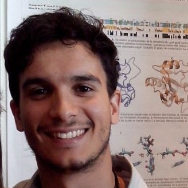
Mariano Martín
TRANSPORT DEFECT-CAUSING NIS MUTANTS UNCOVER A CRITICAL TRYPTOPHAN-ACID MOTIF REQUIRED FOR PLASMA MEMBRANE TRANSPORT
Mariano Martín1, Carlos Modenutti2, Victoria Peyret1, Romina C. Geysels1, Carlos E. Bernal Barquero1, Malvina Signorino3, Graciela Testa3, Patricia Papendieck4, Ana María Masini-Repiso1, Ana Elena Chiesa4, Mirta Beatriz Miras3, Marcelo Adrián Martí2, Juan Pablo Nicola1
Introduction: I- transport defect (ITD) is an autosomal recessive disorder characterized by impaired thyroidal I- accumulation due to loss-of-function mutations in the Na+/I- symporter (NIS)-coding SLC5A5 gene. Objectives: To characterize novel homozygous (p.G561E) and compound heterozygous (p.G543R and p.L562M) SLC5A5 mutants found in two ITD-suspected patients on the basis of non-detectable I- accumulation in an eutopic thyroid gland. Methods: SLC5A5 gene coding region was PCR-amplified and subjected to Sanger sequencing. In silico and functional in vitro studies of novel NIS variants were performed. Results: Functional studies revealed that G561E and L562M markedly reduces I- uptake, when the proteins are heterologously expressed in non-thyroid epithelial cells, because their targeting to the plasma membrane is severely impaired. G543R NIS was previously reported as non-functional. G561Q NIS, like G561E, is mainly retained in the endoplasmic reticulum (ER). Bioinformatics reveal a fully conserved tryptophan-acidic (WD) motif whose disruption leads to NIS retention in the ER. Computational and biochemical analysis indicate that G561E and L562M impair the recognition of the flanking WD motif by the kinesin light chain (KLC) 2, thus impairing mutant NIS exit from the ER. Moreover, short-hairpin RNA-mediated KLC2 knock-down in FRTL-5 cells reduces NIS expression at the plasma membrane, and consequently NIS-mediated I- accumulation. Conclusion: Newly identified NIS variants negatively impact on the three-dimensional structure of its flanking WD motif severely reducing the interaction with the ER-to-Golgi transport adaptor KLC2, thus impairing NIS maturation beyond the ER and reducing I- accumulation in thyroid follicular cells. Conflict of interest: None declared.

Lais S. Moraes
ABI3, a link between PI3K/AKT and WAVE regulatory complex?
Lais S. Moraes, Nilson I T Zanchin e Janete M Cerutti
Genetic Bases of Thyroid Tumors Laboratory, Division of Genetics, Department of Morphology and
Genetics, Escola Paulista de Medicina, Universidade Federal de São Paulo, SP, Brazil
Instituto Carlos Chagas, Fundação Oswaldo Cruz/FIOCRUZ, Curitiba, Paraná, Brazil
Introduction: We have previously reported that ABI3 expression is lost in most
follicular thyroid carcinomas. Restoration of ABI3 expression in a follicular thyroid
cancer cell line (WRO), significantly inhibited cell growth, invasiveness, migration and
reduced tumor growth in vivo. We further demonstrated that ABI3 is epigenetically
silenced by promoter methylation in follicular thyroid carcinomas, suggesting that ABI3
is a tumor suppressor gene. However, little is known about the molecular mechanism
by which ABI3 exercises these tumor suppressive effects in thyroid cells.
Objectives: To investigate the molecular mechanism by which ABI3 exerts its tumor
suppressive effects in FTC.
Methods: Cell lysates from WRO cells stably transfected with either ABI3 or control
were incubated with Human Phospho-Kinase Array Kit and Human Apoptosis Array Kit.
In order to visualize enriched pathways, Kinase Enrichr analysis (KEA) tool was used.
The immunoprecipitation combined with mass spectrometry (LC-MS/MS) was used to
identify ABI3-interacting proteins.
Results: We here show, for the first time, that ABI3 is a phosphoprotein that modulated
distinct cancer-related pathways in thyroid cancer cells. When we applied KEA
analysis, an alternative approach to recognize signaling pathways, we found that PI3K
substrates were enriched. The expression of PI3K/AKT pathway components were
confirmed in two follicular thyroid carcinoma cells (WRO and FTC133) by western blot.
Forced expression of ABI3 in WRO and FTC133 markedly decreased the
phosphorylation of AKT (T308 and S473) and the downstream-targeted protein
pGSK3β (S9). With immunoprecipitation we identify ABI3-interacting proteins that may
be involved in modulating or even integrating signaling pathways. We identified 37
ABI3 partners, including several components of the canonical WAVE regulatory
complex (WRC). These findings suggested that ABI3 function might be regulated
through this protein complex. Both, pharmacological inhibition of the PI3K/AKT
pathway and mutation at residue S342 of ABI3, which is predicted to be
phosphorylated by AKT, provided evidences that the non-phosphorylated form of ABI3
is preferentially present in the WRC protein complex.
Conclusion: Our findings suggest non-phosphorylated form of ABI3 might be
associated with its tumor suppressor effects and that ABI3 might link PI3K/AKT with
WRC complex.

Cesar Seigi Fuziwara
Tumorigenic role of microRNA miR-17-92 cluster via deregulation of TGFbeta signaling pathway in thyroid follicular cells
Fuziwara CS, Kimura ET
Department of Cell and Developmental Biology, University of Sao Paulo, Brazil
Introduction: MicroRNAs (miRNAs) are important regulators of physiological processes including cell proliferation and apoptosis, acting as posttranscriptional regulators of gene expression. TGFbeta (TGFβ) antimitogenic signaling pathway is involved in high iodine anti-proliferative effect in thyroid follicular cells, and we have previously shown that the induction of miR-17-92 cluster of miRNAs by BRAF oncogene leads to resistance to TGFβ-mediated cell cycle arrest. In this study, we aim to clarify the role of miR-17-92 in the biology of normal thyroid follicular cell under the influence of TGFβ signaling transduction.
Methods: We used PCCl3-miR-17-92 cells that over-express miR-17-92 (pCDNA3.1-Neo-miR-17- 92) and PCCl3-0 (empty plasmid) as control. TGFβ signaling reporter assay was performed with 3TP-lux plasmid that contains responsive binding sites to TGFβ signaling. MiR-17-92 expression was detected by real-time and protein expression of TGFβ signaling components by Western-blotting (WB). Cell viability was measured by MTT assay, proliferation by cell counting, cell migration by transwell assay and resistance to doxorubicin by measuring cell apoptosis.
Results: We observed an impaired PCCl3-miR-17-92 response to TGFβ at 1 and 2ng/mL, 0.53-fold and 0.45-fold, respectively, when compared to the PCCl3-0 in 3TP-lux assay. WB revealed reduced Tgfbr2, Smad4 and Smurf2 protein levels in PCCl3-miR-17-92 cells. In the cell cycle assay TGFβ-treated PCCl3-miR-17-92 does not exhibit G1-arrest in the cells. Furthermore, PCCl3-miR-17-92 cells escape from the antiproliferative effect of high iodine concentration treatment (10-3M) and show resistance to doxorubicin-induced apoptosis. The enforced expression of miR-17-92 also increased the cell viability of PCCl3-miR-17-92 cells in 18% and cell migration in more than 3-fold.
Conclusions: The miR-17-92 over-expression enhances the PCCl3 proliferation, abrogating the anti-proliferative effect of high dose iodine and impairing the TGFβ inhibitory signaling, by targeting components of TGFβ pathway. Moreover, the miR-17-92 influence in the migration and resistance to chemotherapy suggest an important role of these miRNA in the tumorigenic behavior in thyroid follicular cells.
Grants from FAPESP:2014/50521-0 and NapmiR

Denise Momesso
Response to Therapy Assessment in Differentiated Thyroid Cancer patients submitted to Total Thyroidectomy or Lobectomy Without Radioactive Iodine Therapy
Denise P Momesso1, Mario Vaisman1, Rossana Corbo1, Samantha P Yang2, R. Michael Tuttle1, Fernanda Vaisman2
1 Endocrinology Department, Universidade Federal do Rio de Janeiro (UFRJ) and Instituto Nacional do Cancer (INCA), Rio de Janeiro, Brasil.
2 Endocrinology, Memorial Sloan Kettering Cancer Center, New York, USA.
Introduction: While response to therapy assessment is a validated tool for ongoing risk stratification in differentiated thyroid cancer (DTC) patients submitted to total thyroidectomy (TT) and radioactive iodine therapy (RAI), it has not been well studied in patients treated with lobectomy (L) or TT without RAI. Because the response to therapy definitions are heavily dependent on serum thyroglobulin (Tg) levels, modifications of the original definitions were needed to appropriately classify patients treated without RAI. The aim of this study was to evaluate and validate these previously proposed response to therapy definitions in DTC patients submitted to L or TT without RAI.
Methods: 507 adults with DTC submitted to L (n=187) or TT (n=320) without RAI were retrospectively evaluated.
Results: Median age was of 43.7 years, 88% were female, 85% had low and 15% intermediate ATA risk. During follow-up period (median 100.5 months) recurrent/persistent structural disease (SD) was diagnosed in 3.6% of the patients. All patients (100%) classified as having excellent response to therapy (non-stimulated Tg for TT <0.2ng/ml and for L < 30ng/ml; n=326) had no evidence of SD at final follow-up. SD was observed in 1.3% of the patients with indeterminate response (non-stimulated Tg for TT 0.2-5ng/ml, stable or declining Tg antibody and/or non-specific findings on imaging; n=2/152); 31.6% of patients with biochemical incomplete response (non-stimulated Tg for TT >5ng/ml and for L >30ng/ml and/or increasing Tg antibody and negative imaging; n=6/19) and all (100%) patients with structural incomplete response (n=10/10) (p<0·0001). Initial ATA risk estimates were significantly modified based on response to therapy assessments, since excellent response to therapy significantly decreased the risk of SD to 0% and incomplete response (biochemical or structural) increased the risk of SD.
Conclusions: Our data validates the newly proposed response to therapy assessment in DTC treated with L or TT without RAI as an effective tool for ongoing risk stratification that could be used to modify initial risk estimates and better tailor follow-up and future therapeutic approaches.
Keywords: (5) response to therapy assessment; differentiated thyroid cancer; total thyroidectomy without radioactive iodine; lobectomy.

Aline Neves Araujo
Genome-Wide Copy Number Analysis in a Family with p.G533C RET Mutation and Medullary Thyroid Carcinoma Identified Regions Associated with Higher Predisposition to Lymph Node Metastasis
Araujo AN 1, Moraes LS 1, França MIC 2, Maciel RMB 2 and Cerutti JM 1
1 Genetic Bases of Thyroid Tumors Laboratory, Division of Genetics, Department of Morphology and Genetics, Universidade Federal de São Paulo, SP, Brazil.
2 Laboratory of Molecular and Translational Endocrinology, Division of Endocrinology, Department of Medicine, Universidade Federal de São Paulo , SP, Brazil.
BACKGROUND: Our group described a p.G533C RET mutation in a family with multiple endocrine neoplasia type 2A syndrome. Clinical heterogeneity was observed among the p.G533C-carries, mainly associated with the presence of lymph node metastases. The aim of this study was to investigate whether copy number variations (CNV), present in the constitutional DNA, is associated with higher predisposition to lymph node metastasis in this kindred.
METHODS: Fifteen p.G533C carriers with medullary thyroid carcinoma (MTC) were chosen for the initial screening. The subjects were divided into two groups according the presence (n=8) or absence (n=7) of lymph node metastasis. Peripheral blood DNA was independently hybridized using Genome-Wide Human SNP Array 6.0 platform and the results were analyzed using Genotyping Console software. To identify the possible candidate regions associated with the presence of lymph node metastasis, cases (metastatic MTC) were compared with controls (nonmetastatic MTC). The identified CNVs were validated by quantitative PCR in an extended cohort (n=26).
RESULTS: We identified seven CNV regions that were associated with presence of lymph node metastases, some of them encompass non-annotated and annotated genes. The validation step confirmed that a CNV loss impacting the FMN2 gene was associated with a more aggressive phenotype, observed as presence of lymph node metastasis in this family (p ≤ 0.05). We additionally verified the association of CNVs with clinical-pathological features and observed an association between a CNV loss, which comprise the LCE3C gene, and tumor size (p ≤ 0.05). Finally, we investigated whether the development of lymph node metastasis might depend on a combination of various CNVs. These analyses defined a CNV pattern related to a more aggressive phenotype in this family, with CNV deletions being enriched in the metastatic group (p ≤ 0.05).
CONCLUSION: Although hereditable specific RET mutations are important to determine cancer risk; our findings support the hypothesis that germline CNVs in disease-affected individuals may predispose them to MTC aggressiveness, mainly associated with the presence of lymph node metastases.

Juliana Cazarin
POTENTIAL ANTI-TUMORIGENIC EFFECTS OF AMP- KINASE (AMPK) ON PAPILLARY THYROID TUMOR CELL LINEAGES
Category: Basic Research
In the last few years several in vitro studies have shown that AMPK regulates diverse cellular processes involved in carcinogenesis as cell growth, apoptosis, autophagy and cell polarity (Luo et al, 2012). The role of AMPK in carcinogenesis seems to be related to two opposing functions: (1) promotion of tumor cells survival in unfavorable metabolic situations, (2) decrease in cell proliferation. We recently described that AMPK activation decreases iodine uptake and stimulates glucose uptake in rat thyrocytes (Andrade et al, 2011, Andrade et al., 2012), two changes that are also observed in thyroid tumor progression. However, the role of AMPK in thyroid cancer is not known.
Objective: Evaluate, in vitro, the role of AMPK on cellular processes involved in thyroid carcinogenesis.
Methods: Normal human thyrocyte lineage (NTHY-ORI) and two papillary thyroid carcinoma lineages BCPAP (BRAF v600e mutation) and TPC-1 (RET/PTC translocation) were treated with the pharmacological activator of AMPK, AICAR (1mM) for 24h. AMPK expression, cell proliferation, cell adhesion, cell migration and cell cycle were evaluated.
Results: Total and phosphorylated AMPK are expressed in the 3 different cell lineages. However, the basal expression of phosphorylated AMPK is higher in BCPAP.
We observed a quite similar reduction in cell number of the 3 lineages after Aicar treatment for 24h. When the cell cycle was evaluated under the same experimental conditions we observed a reduction of cell proliferation with a G0/G1 phase arrest in NTHY-ORI and G0/G1 and S phase arrest in BCPAP.
In TPC-1 cells, we could not observe reduction of cell proliferation.
Aicar also produced an increase in cell adhesion and a reduced cell migration ability in all the three lineages.
Conclusion: AMPK activation reduces cell proliferation in the normal thyrocyte cell lineage NTHY and in the papillary carcinoma cell lineage BCPAP. We could not observe a reduction of cell proliferation in the papillary carcinoma cell lineage TPC-1 upon AMPK activation. However, we observed a reduction in TPC-1 cell number under the same conditions.
We also demonstrated an increase in cell adhesion and reduction of cell migration ability, which may be related to a reduced metastatic ability and, consequently, a less aggressive phenotype.
These data strongly suggests a potencial anti-tumorigenic effect of AMPK activation on papillary thyroid tumor cells lineages, in vitro.
Bibliographical references:
Andrade BM, Araujo RL, Perry RLS, Souza ECL, Cazarin JM, Carvalho DP, Ceddia, RB A novel role for AMP-kinase in the regulation of the Na+/I–symporter and iodide uptake in the rat thyroid gland. Am J Physiol Cell Physiol, 2011.
Andrade BM, Cazarin J, Zancan P, Carvalho DP. AMP-Activated Protein Kinase Upregulates Glucose Uptake in Thyroid PCCL3 Cells Independent of Thyrotropin. Thyroid, 2012.
Luo Z, Zang M, Guo W. AMPK as a metabolic tumor suppressor: control of metabolism and cell growth. Future Oncol., 6(3): 457–470, 2010

Thalita G. Alves
UNEXPECTED HIGH LEVEL OF CALCITONIN IN PATIENTS WITH APPARENTLY CURED MEDULLARY THYROID CARCINOMA: A NOVEL PITFALL IN THE IMMUNOASSAY – THE “MACROCALCITONIN”
Thalita Goulart Alves (Universidade Federal de São Paulo – Laboratório de Endocrinologia Molecular e Translacional)
– Contato: tha.alves@gmail.com
Introduction: Calcitonin (CT) represents a sensitive marker of medullary thyroid carcinoma (MTC). Clinical challenge may rise when patient presents mild CT increase without corresponding structural disease found by imaging scan. This lack of biochemical-clinical correlation may suggest assay interferences, which can delay a suitable approach for the patients. The objective of the study was to investigate the presence of new assay interferences in the serum of MTC patients who are apparently without structural disease.
Methods: CT was measured by an in-house immunofluorometric assay from 25 patients (17F:8M, aged 16-67 years) with MTC. After precipitation with polyethylene glycol (PEG) samples were subjected to gel-filtration on high performance liquid chromatography-HPLC (Biosep S-3000 column, 30×6.7mm, Phenomenex) and to affinity chromatography on Protein A Sepharose (GE Healthcare). Results showed that serum CT ranged from 21-19.800 pg/mL. Three patients showed low recovery of CT (1-7%) after PEG when compared with recovery of the others (55-135%). Elution profile on HPLC showed that almost all of the immunometric CT from these three patients behaved as a high-molecular-weight aggregate (MW>300 kDa). Additionally, when these samples were applied to the protein A sepharose, CT immunoreactivity was almost completely retained on the column and only released after lowering pH to 2.8.
Conclusion: Our results show for the first time the presence of a novel pitfall in the CT immunoassay – the “Macrocalcitonin”. Its etiology, frequency and meaning remain to be defined. However, rather than a simple artifact, its recognition has a noteworthy interest since it can help clinicians on the MTC follow-up, avoiding unnecessary investigation and overtreatment.

Vanina Alamino
DENDRITIC CELLS (DC) MATURED WITH TRIIODOTHYRONINE (T3) IN THE PRESENCE OF TUMOR ANTIGENS INDUCE A POTENT ANTITUMORAL RESPONSE: ROLE OF T3 AS ADJUVANT IN DC-BASED CANCER VACCINES.
Alamino VA, Gigena N, Montesinos MM, Donadio AC, Milotich SI, Masini-Repiso AM, Rabinovich GA, Pellizas CG.
Background: We demonstrated that mice DC express thyroid hormone receptor β1 and that T3 stimulates DC maturation, IL-12 production and T cell allostimulatory capacity directing a T1-type response (FASEB J 2008,22:1032) involving Akt and NFkB activation signals (JBC 2010,285:9569). Moreover, T3 increased DC ability to stimulate cytotoxic antigen-specific responses and antigen cross-presentation (RAEM 2010,47:77).
Objectives: 1) to evaluate apoptosis in T3-treated DC, 2) to analyze the migratory capacity of T3-stimulated DC, 3) to assess the capacity of T3-matured DC in the presence of tumor antigen to stimulate an antitumoral response in vivo.
Methods: Mice bone marrow derived DC were pulsed with T3 (5nM) for 18 h. Apoptosis and DC migratory ability were analyzed by standard methodologies. For mice antitumor vaccination, B16-OVA melanoma model was used and immunizations with T3-pulsed DC in the presence of OVA were administered at 1, 3, 5 and 8 days after tumor cell inoculation. Tumor size was measured with vernier calipers and mice survival registered. Lymphocyte T linage was determined in tumor infiltrating cells and IFN-γ measured in esplenocytes. P<0.05 was considered significant (ANOVA-SNK, Gehan-Bislow-Wilcoxon).
Results: 1) T3 reduced DC apoptosis, 2) T3 increased DC migration to lymph nodes, 3) T3-stimulated DC-based immunotherapy was able to reduce the incidence of tumor establishment and tumor growth in affected mice, prolonging their survival. These effects were mediated, at least in part, by CD8+ T cells able to secrete IFN-γ.
Conclusions: Results strongly suggest significant adjuvant properties of T3 in DC-based tumor vaccination with profound implications in cancer immunotherapy.

Magali Nazar
A NOVEL MECHANISM IN THE REGULATION OF THYROID PEROXIDASE EXPRESSION INVOLVING THE NF-κB TRANSCRIPTION FACTOR NAZAR, M.; Nicola, JP.; Pellizas, CG.; Masini, AM.
FACULTAD DE CIENCIAS QUÍMICAS; UNIVERSIDAD NACIONAL DE CÓRDOBA, ARGENTINA
Background: Thyroid peroxidase (TPO) is a central enzyme involved in thyroid hormone synthesis and the main microsomal component for thyroid autoimmunity. NF-κB is a critical mediator of the action of lipopolysaccharide (LPS) and other agents. We have proposed that NF-κB regulates thyroid specific gene expression and that LPS induces thyroglobulin and Na+/I- symporter expression.
Objective: To analyze the involvement of NF-κB in regulation of TPO expression.
Methods: FRTL-5 thyroid cells treated with TSH, LPS or LPS + TSH, protein (Western- blot), mRNA (RT-qPCR), promoter activity (luciferase) and ChIP were assayed.
Results: LPS increased TPO expression over the TSH-induced level. An augment of TSH- induced TPO mRNA was also observed. To evaluate transcriptional activity, a construct of TPO promoter (420 bp) was transfected into FRTL-5. LPS enhanced the TSH-stimulated TPO promoter activity. A construct lacking the κB site showed no response to LPS and reduced activation by TSH. LPS-induced transcriptional activity was suppressed by a NF-κB inhibitor, BAY, which also repressed TSH-stimulated TPO expression. A similar inhibition was exerted by BAY on the TPO protein and mRNA level induced by LPS. As well, quantitative ChIP assay in TSH and LPS-stimulated cells evidenced the binding of NFκB subunit p65 to the κB site in TPO promoter.
Conclusions: These findings reveal that a novel mechanism involving the NF-κB pathway mediates the TSH and LPS-stimulated TPO expression including, at least in part, the transcriptional level. Since NF-κB activation is related to many pathophysiological processes such as inflammation and autoimmunity, this study favors that NF-κB-induced modifications in TPO expression could be implicated in thyroid disease.

Mírian Romitti
TYPE 3 DEIODINASE EXPRESSION IN PAPILLARY THYROID CARCINOMA IS ASSOCIATED WITH TUMOR AGRESSIVENESS AND MODULATED BY BRAFV600E MUTATION Romitti M, Zennig N, Bueno AL, Meyer ELS, Wajner SM, Maia AL Thyroid Section, Endocrine Division, Hospital de Clínicas de Porto Alegre, UFRGS, Porto Alegre, RS, Brasil.
Introduction: Thyroid hormone regulates a wide range of cellular activities, including the balance between cell proliferation and differentiation. The type 3 deiodinases (D3) catalyzes thyroid hormone inactivation and recent studies have showed that D3 can be reactivated in human neoplasias.
Objective: To evaluate DIO3 expression in papillary thyroid carcinoma (PTC) to explore the signaling pathways involved in D3 regulation, as well as the potential implications on disease presentation.
Methods: Twenty-six PTC samples and adjacent thyroid tissues were obtained from patients attending our Institution. DIO3 mRNA was measured by Real-Time PCR and D3 activity by paper descendent chromatography. BRAFV600E mutation was identified in DNA from paraffin blocks by direct sequencing. The human PTC cell line (K1) was used to study D3 regulation.
Results: DIO3 transcripts were detected in all samples analyzed. We observed a paralleled increase in DIO3 mRNA (~5 fold) and activity in PTC samples. Remarkable, DIO3 mRNA and activity were significantly higher in BRAFV600E mutated samples (P=0.003). Increased D3 activity was associated with tumor size (r=0.68, P=0.003), lymph node (P=0.03) and distant metastasis (P=0.006). As expected, in K1 cells, D3 activity was increased by SeO4, cAMP or T3 and abolished by iopanoic acid. Interestingly, TGF-β, which has been implicated on tumor progression, induced a 4-fold increase in DIO3 mRNA levels in PTC cell line.
Conclusions: The results demonstrate that increased DIO3 expression in PTC is associated with tumor size and aggressiveness. These findings support the concept that increased thyroid hormone inactivation might be associated with dedifferentiation and proliferative activity in tumoral cells.

Paula Bargi de Souza
ACUTE T3-TREATMENT ALTERS THE TSH DISTRIBUTION IN THYROTROPHS: A NEW NEGATIVE FEEDBACK LOOP BY NON-GENOMIC ACTION? BARGI-SOUZA, P1; ROMANO, RM1; SALGADO, RM2; SILVA, FG1; BRUNETO, EL1; NUNES, MT1 1Department of Physiology and Biophysics; 2Department of Cell and Developmental Biology, USP, Brazil. Thyroid Hormone Action
INTRODUCTION
The thyroid-stimulating hormone or thyrotropin (TSH) produced by thyrotrophs that represents 5% of the cells in adenohypophysis exerts a central role in the hypothalamus-hypophysis-thyroid (HHT) axis. This glycoprotein is the main regulator of the synthesis and secretion of thyroid hormones (TH) which in turn exert a negative feedback mechanism in the hypothalamus and in pituitary by reducing the synthesis of beta and alpha chains through genomic actions, and as a consequence, the TSH secretion. This classical mechanism depends of the TH interaction with thyroid hormone receptor (TR) and the binding in thyroid response elements (TREs) present in the gene targets, such as beta and alpha TSH subunits and thyrotropin releasing hormone (TRH) and is more evident hours or days after treatment. In the last decades have seen an increasing body of evidence has shown that some TH actions might be elicited in a short period of time (seconds to minutes) and in the presence of gene transcription inhibitors, which indicates that TH can also act non genomically. Recent data published by our laboratory demonstrated that the triiodothyronine (T3) acutely reduces the poli-A tail length of beta TSH subunit mRNA by posttranscriptional mechanisms and impairs the association between this transcripts and ribosome reducing the translational rate (1). These results suggest that T3 could act non genomically on the control of TSH gene expression. Taking this data into consideration and that the TSH secretion is the first step by which TSH serum concentration could be controlled, our hypothesis is that the T3 can alters the TSH secretion and distribution in thyrotrophs of rats T3-treated acutely.
OBJECTIVE
This study aims to evaluate if TH could acutely regulate the TSH distribution in thyrotrophs which might provide evidence that they could act at this step by non genomic mechanisms.
METHODS
For this study, initially, male Wistar rats weighing 200-250g were housed in a room kept at constant temperature (23 * 2 C) and on a 12 h-light/12h-dark (lights on at 0700 h) schedule. Part of the animals were made hypothyroid by surgical thyroidectomy, after being deeply anaesthetized with ketamine and xylazine, and received 0.03% methylmercaptoimidazole (MMI), plus 4.5 mM calcium chloride in drinking water during 20 days. Sham-operated animals were used as control. The animals were then divided into the following groups: 1) euthyroid sham-operated (SO); 2) SO plus supraphysiological doses of T3 (100 μg/100 g BW) (SO+T3100); 3) hypothyroid (Tx); 4) Tx plus T3 in supraphysiological doses, as specified above (Tx+T3100); 5) Tx plus T3 in physiological doses (0.3 μg/100 g BW) (Tx+T30.3) (2). Euthyroid (SO) and hypothyroid (Tx) animals received iv administration of NaCl 0.9% as vehicle. All the animals were killed 30 min after the administration of T3 or vehicle. The pituitaries were rapidly excised and used for the analysis of TSH expression was evaluated by Western blotting; the TSH distribution was analyzed by means of immunofluorescence and electron immunocytochemistry
At least seven animals per group were used, and the experiments were repeated at least three times. The experimental protocol was in agreement with the ethical principles in animal research adopted by the Brazilian College of Animal Experimentation and was approved by the Institute of Biomedical Sciences/University of São Paulo-Ethical Committee for Animal Research.
The results were obtained from at least three experiments and subjected to normality (Kolmogorov-Smirnov) and homocedasticity test (Bartlet), followed by analysis of variance (one way – ANOVA), and Student-Newman-Keuls post test, using the GraphPad Prism 5 Software. The data were expressed as means * SEM and differences were considered significant at P < 0.05.
RESULTS
It was observed a 63% decrease of the TSH protein content in pituitary of hypothyroid rats compared with SO and SO+T3100. The acute T3-treatment, in both doses, promoted a 30% increase in the TSH protein content. These results suggest a possible blocks in the TSH secretion.
To analyze this possibility was performed the immunofluorescence assay. It was observed that pituitaries from Tx rats presented a more evident TSH staining at the cell surface, whereas in the SO group, it was observed whole cytoplasm. The acute treatment of SO rats with T3 (SO+T3 group) apparently did not alter the immunolabeling pattern of the TSH protein, which remained in the cytoplasm, but when the acute treatment was observed in hypothyroid rats, with both dose of T3, there is a weaker staining at the cell surface, compared to Tx. This alteration seemed to be more remarkable when T3 was administered in physiological doses, condition in which one can also observe an increase in the staining for TSH in the whole cytoplasm.
The precise location of the granules containing TSH was detected by electron microscopy Immunogold labeling, which showed a marked increase in TSH content in Tx rats’ thyrotrophs; the vesicles containing TSH were also shown to be closer to the plasma membrane, when compared with SO rats, as observed by immunofluorescence, and it is noteworthy the presence of high amount of TSH labeling in blood vessels. In the SO group, the TSH labeling was more pronounced in vesicles scattered in the cytoplasm. The acute T3 treatment increased the TSH labeling in vesicles dispersed in the whole cytoplasm in the SO+T3100, Tx+T3100 and Tx+T30.3 groups and reduced the staining in blood vessels.
CONCLUSION
The results presented herein demonstrated for the first time that the triiodothyronine acutely blockade TSH secretion, as shown by the alterations of the distribution of TSH granules in thyrotrophs 30 min after their administration, and point to a non-genomic action of TH also at this level.
KEYWORDS
Triiodothyronine – Thyrotropin – Non genomic actions
REFERENCES
Goulart-Silva F, Souza PB, Nunes MT 2011 T3 rapidly modulates TSHβ mRNA stability and translational rate in the pituitary of hypothyroid rats. Molecular and Cellular Endocrinology 332 1-2: 277-282
Dillmann WH, Berry S, Alexander NM 1983. A physiological dose of triiodothyronine normalizes cardiac myosin adenosine triphosphatase activity and changes myosin isoenzyme distribution in semistarved rats. Endocrinology 112: 2081-2087

André Uchimura Bastos
MOLECULAR ANALYSIS OF PAPILLARY THYROID CARCINOMAS REVEALS DIVERSE TRANSCRIPTOMA SIGNATURE OF TUMORS WITH BRAF V600E OR RET/PTC AND THE IDENTIFICATION OF TUMORS WITH DUAL MUTATIONS
AU Bastos, G Oler, J Hemerly, JM Cerutti
UNIFESP, São Paulo, Brazil
Background: BRAF V600E activating mutation is the most common genetic event found in papillary thyroid carcinoma, followed by RET/PTC rearrangements. In most series described so far, BRAF and RET/PTC are mutually exclusive.
Objectives: To investigate the prevalence of RET/PTC rearrangements in a Brazilian cohort of 118 PTC, whose BRAF V600E mutational status was known. Our molecular findings were correlated with clinicopathological features. We next investigated whether the expression of iodide-metabolizing genes (NIS, TSHR, TPO and TG), hypoxia (HIF1) or glucose transporter genes (GLUT1 and GLUT3) were modulated by RET/PTC or BRAF V600E. Lastly, we investigated genetic alterations along PI3K/AKT pathway.
Methods: Nested RT-PCR was used to identify the RET/PTC isoforms. Quantitative PCR was used to investigate gene expression. Gene mutation was investigated by direct sequencing.
Results BRAF V600E and RET/PTC alterations were found in a high prevalence. A high percentage of tumors have dual mutations. Although BRAF V600E and RET/PTC convey signals along same pathway, expression signatures in our analysis showed differences between these two effectors. Alterations along PI3K/AKT were rarely found.
Conclusions: The signatures in our analysis may explain the clinical behavior. Different than expected PI3K/AKT pathway may not play a role in the pathogenesis and progression of PTC. The recognition of dual mutation has important implications for drug treatment and the development of resistance.

Alex Shimura Yamashita
CROSS-TALK BETWEEN NOTCH AND MAPK SIGNALING DURING RET/PTC3 AND BRAFT1799A ONCOGENE ACTIVATION
BACKGROUND: Mutually exclusive mutations in members of MAPK signaling pathway (RET/PTC or BRAF) are present in about 70% of papillary thyroid carcinomas (PTC), activating constitutively the MAPK signaling pathway. However, the effect of this activation in other signaling pathways remains unclear. Recently, Notch signaling has been implicated in tumorigenesis in other cancer types. Therefore, the aim of this study was to evaluate the influence of RET/PTC and BRAFT1799A oncogene activation in Notch signaling pathway in normal thyroid rat cell line and in TPC-1 cell line.
METHODS: Cell lines. PCCl3 (rat normal thyroid cell line) harboring doxycycline-inducible RET/PTC3 (PTC3-5) and BRAFT1799A (PC-BRAF), TPC-1 (human PTC cell line harboring RET/PTC1 mutation) were treated with MEK inhibitor U0126 (10 mM). RNA and protein expression: total RNA extract to perform quantitative real-time PCR (NOTCH1, HES1, P21, P27, and CCND1) and total protein were extract to perform Western blotting (phospho-ERK1/2, ERK1/2, NOTCH1, and alpha-actin). Flow cytometry analysis: TPC-1 were treated with GSI (1 mM) and proliferation (growth curve and viable cells), cell viability, cell cycle (stained with propidium iodide) and apoptosis (Anexin-FITC) analysis were performed using Guava System.
RESULTS: Conditional activation of RET/PTC3 and BRAFT1799A by doxyclycline (Dox) showed a sustained enhancement in ERK phosphorylation (24h, 48h, and 72h) in PTC3-5 and PC-BRAF cell lines. The time course of Notch1 gene expression was raised soon after 24 hours RET/PTC3 activation, and still higher 48 hours and 72 hours after oncogene induction in PTC3-5 cell line (24h: +8.3 fold, p<0.001; 48h: +7.0 fold, p<0.001; 72h: +3.8 fold, p<0.01). During BRAFT1799A activation in PC-BRAF cell line the gene expression of Notch1 also increased after 24 hours, with the higher expression in 48 hours, and still higher in 72 hours (24h: 1.3 fold, p<0.05; 48h: 2.6 fold, p<0.05; and 72: 56%, p<0.05). In addition, RET/PTC3 and BRAFT1799A activation increased the HES1 gene expression (60%, p<0.05 and 81%, p<0.05, respectively), the target gene of Notch signaling. To further understand the effect of MAPK signaling in Notch pathway, TPC1 were treated with MEK inhibitor U0126 (1mM), which reduced NOTCH1 protein expression and HES1 gene expression (78%, p<0.05). Then we treated the TPC-1 cell line with GSI (1mM), the Notch signaling inhibitor, the treatment diminished cell proliferation, reducing the number of cells after 48 hours of treatment and the percentage of viable cells (-30%, p<0.05), and increasing apoptosis (60%, p<0.01). In cell cycle analysis we observed the enhancement of DNA fragmentation (1.1 fold, p<0.01). Furthermore, the GSI (1mM) treatment in TPC-1 cell line modulates the cell cycle related genes: increasing the gene expression of P21 (26%, p<0.05) and P27 (71%, p<0.05), and reducing CCND1 gene expression (27%, p<0.05).
CONCLUSION: The induction of PTC related oncogenes, acting through MAPK signaling, enhanced Notch pathway, wich are more potent under RET/PTC activation. Targeting Notch signaling showed a anti-proliferative effect, suggesting an important role in tumorigenesis of MAPK-induced PTC, with a therapeutic implication in thyroid cancer.

Letícia Aragão Santiago
THE Δ337T MUTATION ON THE TRβ CAUSES ALTERATIONS ON GLUCOSE HEPATIC METABOLISM.
Letícia Aragão Santiago, RN, MS, PhD
Mice bearing the genomic mutation Δ337T on the TRΒ gene present the classical signs of resistance to thyroid hormone, with high serum TH and TSH. This mutant thyroid hormone receptor (TR) is unable to bind TH and is constitutively bound to a co-repressor, having also a dominant negative effect on normal function of other TRs. We have previously reported that homozygous (TRΒΔ337T) mice for this mutation showed reduced body weight (BW), length and white adipose tissue mass, despite augmented relative food intake. We have also observed lower HOMA-IR and higher tolerance to glucose on a glucose tolerance test and marked sensitivity to insulin on an insulin sensitivity test.
Conversely, hyperthyroid mice have normal tolerance to glucose but higher insulin sensitivity. TRΒΔ337T mice developed profound hypoglycemia after insulin administration. Therefore we postulated that the mutant TRΒ interferes importantly with hepatic glucose metabolism. In order to investigate whether low blood glucose after insulin administration was due to reduction in hepatic glucose production, we performed the pyruvate tolerance test (PTT). Glycemia was analyzed after overnight fasting after administration of 2g/kg BW of pyruvate. Compared to wild-type (WT) littermates, TRΒΔ337T mice displayed lower blood glucose at 30 and 60 minutes after pyruvate administration (P<0.05). In addition, hepatic glycogen content, analyzed by enzymatic assay, was 4.5-times lower in TRΒ Δ337T mice than in WT (P<0.01). However, in hyperthyroid (50μg of T3/100g BW/day/14 days) WT mice of the same genetic background, we found a reduction of higher magnitude (30-times reduction) in glycogen content. In contrast, hypothyroid mice had a higher hepatic glucose content (p<0.0001). This suggests that TRΒΔ337T mice exhibited an attenuated hyperthyroid-like phenotype regarding hepatic glycogen deposit, which was also found previously for TH-induced brown adipose tissue hypertrophy. These effects may correlate to the dominant negative effect of the mutant TRΒ.
Collectively the data suggest that TRΒΔ337T mice have deficit on hepatic glucose production, by reduced gluconeogenesis and lower glycogen deposit. To determine gluconeogenic genes expression, we performed mRNA expression analysis by real-time PCR of the rate-limiting enzymes phosphoenolpyruvate carboxylase kinase (PEPKC) and glucose 6-phosphatase (G6Pase), together with PGC1α, a key transcriptional factor that positively regulates these enzymes and has been shown to be essential to gluconeogenesis. PGC1α mRNA was reduced in TRΒΔ337T mice (2.9-times, P<0.001), accompanied by a tendency for reduced expression of enzymes that are responsible for the first and last catalytic reactions in the gluconeogenic pathway. In our preliminary data, we found a decrease, yet not significant, of mRNA for PEPCK (P=0.0589) and G6Pase (P=0.1010). The reduction in PGC1α expression is consistent with the up-regulation of its gene expression by TH via TRΒ, and therefore in this aspect the TRΒΔ337T mice behave as the hypothyroid phenotype.
In conclusion, our data show that mice carrying the Δ337T dominant negative mutation on the TRΒ exhibit impaired glucose homeostasis related to a reduction in hepatic glycogen content and reduced expression of PGC1α mRNA and possible reduction on PEPCK and G6Pase expression as well, leading to decreased gluconeogenesis and hepatic glucose production.

Juan Pablo Nicola
INTESTINAL Na+/I- SYMPORTER (NIS) EXPRESSION IS REGULATED AT POST-TRANSCRIPTIONAL LEVEL BY HIGH CONCENTRATIONS OF IODIDE Nicola JP (1), Susperreguy S (1), Carrasco N (2), Masini-Repiso AM (1)
(1) Centro de Investigaciones en Bioquímica Clínica e Inmunología. CIBICI-CONICET. Departamento de Bioquímica Clínica. Facultad de Ciencias Químicas. Universidad Nacional de Córdoba. Córdoba. Argentina. (2) Department of Molecular Pharmacology. Albert Einstein College of Medicine. NY. USA.
Dietary iodide absorption in the gastrointestinal tract constitutes the first step in iodide metabolism. Since this halogen is an essential component of the thyroid hormone, its concentrating mechanism is of considerable physiological importance. We have recently described and proposed the expression of the sodium/iodide symporter (NIS) on the apical surface of the intestinal epithelium as the central component of the iodide absorption system. The down-regulation of NIS by high iodide concentrations in the thyroid is related to the escape from Wolff-Chaikoff effect. The present study evaluated the effect of iodide excess on intestinal NIS expression and the mechanism involved using the small intestine cell line IEC-6. Cells treated with an excess of iodide reduced significantly the iodide uptake process which correlated in time with a diminution of NIS expression at the plasma membrane; however NIS reduction in the whole protein extract was delayed. NIS mRNA level was decreased by the treatment with high iodide doses. Surprisingly, no modulation on NIS promoter activity in transiently transfected IEC-6 cells was evidenced, suggesting a non transcriptional process. Evaluation of NIS protein and mRNA half-life showed that in the presence of iodide NIS protein half-life was slightly shortened whereas mRNA stability was strongly reduced. In conclusion, iodide excess down-regulates intestinal NIS function and expression as it was similarly observed in the thyroid. The effect of high iodide concentrations regulates NIS expression through a complex mechanism that involves regulation at different levels. Although premature, these results seem to indicate that a post-transcriptional regulation is exerted on NIS by high concentrations of its own substrate.

Monalisa Ferreira Azevedo
A NOVEL SYNDROME RELATED TO SELENOPROTEINS DEFICIENCY Azevedo, MF1,3; Barra, GB2; Castro, LC1; Amato, AA1,3; Velasco LFR2; Godoy, P2; Naves, LA3; Neves, FAR1
1 Laboratory of Molecular Pharmacology, Faculty of Health Sciences, University of Brasília – UnB, Brasília, DF, Brazil. 2 Sabin Institute and Laboratory of Clinical Analysis, Brasilia, DF, Brazil. 3 Section of Endocrinology, University Hospital of Brasilia, Faculty of Medicine, University of Brasilia – UnB, Brasilia, DF, Brazil.
The generation of active thyroid hormone or its inactivation is mediated by deiodinases. The synthesis of these enzymes requires incorporation of the rare aminoacid selenocysteine, through recoding of the UGA stop codon, in a unique process that creates the class of selenoproteins. The recognition of UGA requires a selenocysteine insertion sequence (SECIS) element in the 3’ untranslated region, and is mediated by the SECIS binding protein (SBP2). We describe a 11-year-old girl who presented with thyroid hormone dysfunction associated with short stature, delayed bone age, defective auditory function, progressive peripheral myopathy characterized by hypotonia and weakness, and moderate scoliosis with lateral trunk deviation. Serum TSH was slightly increased, with elevated T4 and reverse T3, while T3 levels were low. Low doses of T3 supplementation, but not T4, suppressed TSH. These findings suggest an impairment of the conversion of T4 to T3. Further analysis showed that the patient’s serum levels of another selenoprotein, glutathione peroxidase (GPx), were significantly reduced (GPx 11 U/g Hb; Normal Range 27.5 – 73.5 U/g Hb). Moreover, serum selenium was undetectable (Normal Range 50 –150 mg/L). Genetic investigation demonstrated two novel nonsense heterozygous mutations affecting the SBP2 gene that create a truncated protein (R120X/R770X). Family investigation showed that inheritance is recessive. Since SBP2 is epistatic to selenoproteins synthesis, these mutations produced a generalized defect on selenoproteins, with a phenotype that had not been previously described. The description of this novel syndrome comprises a new perspective on the comprehension of the physiological role of selenoproteins in humans.

Flavia Roche Moreira Latini
RE-expression of ABI3BP and ABI3 in human thyroid carcinoma cell LINES promotes senescence and INHIBITS CELL growth, migration, invasion and tumor growth F. R. M. Latini1,3, J. P. Hemerly2, G. J. Riggins4, and J. M. Cerutti1,3
1 Division of Genetics, Department of Morphology, 2 Division of Biophysics, Department of Biophysics and 3 Laboratory of Genetic Bases of Thyroid Tumors, Federal University of São Paulo, Brazil; and 4 Department of Neurosurgery, Johns Hopkins University Medical School, Baltimore, Maryland, USA.
Using Serial Analysis of Gene Expression we identified a transcript that was present in Follicular Thyroid Adenoma (FTA) and normal thyroid libraries while it was under-expressed in the Follicular Thyroid Carcinoma (FTC) library, suggesting that the lost of its expression could be associated to FTC’s pathogenesis. The transcript encodes a protein named ABI3BP. Although ABI3BP was first described as a target of ABI3, a protein involved in cell migration and metastases, its biological function still remains unknown. To investigate whether the loss of expression of ABI3BP and ABI3 could be associated with thyroid tumor progression, we first cloned the full length cDNA of ABI3BP and ABI3 into pcDNA vector. The constructs were stably transfected into two human thyroid carcinoma cell lines that do not expresses these transcripts. Subsequently, we evaluated the effect of ABI3BP and ABI3 re-expression on cell growth, apoptosis, senescence, cell motility, invasion, and tumor growth. At least two clones from each transfectant were tested. Clones expressing ABI3BP showed reduced proliferation, migration, inhibited Matrigel invasion and promoted cellular senescence. These in vitro observations are in agreement with in vivo analysis, given that cells re-expressing ABI3BP extinguished or reduced tumor growth in nude mice. Likewise, ABI3 expressing clones decreased migration, invasion and tumor formation in nude mice. These findings represent the first experimental evidence showing that the loss of expression of ABI3BP and ABI3 may modulate thyroid tumor progression. Supported by Fapesp and CNPq.

Helton Estrela Ramos
CLINICAL AND MOLECULAR ANALYSIS OF THYROID HYPOPLASIA: A POPULATION-BASED APPROACH STUDY.
Introduction:
Thyroid Hypoplasia (TH) can be associated with several genetic defects, including mutations in the TSH receptor (TSHr), the PAX8 gene, the Gsα-subunit and TSHβ-subunit. The numerous cohorts of patients with Congenital Hypothyroidism (CH) studied so far have not been collected as a continuous series and, therefore, the real prevalence of different pathogenetic causes in sporadic TH is still not well defined. We have studied a continuous series of patients with CH with in situ thyroid gland and a volume ranging from normal to hypoplasic. We attempted to dissect the individual phenotypes in these patients, using a population-based approach, in an entire population screened for CH over a 16-year period. In these patients we searched for mutations in some of the most likely candidate genes: TSHr and PAX8.
Materials and Methods:
Patients: From 1990 to 2006 we screened 2.546,112 newborns from state of Parana (Brazil) by blood spot TSH measurement. 644 patients with confirmed diagnosis of CH were found and 566 are followed in our institution. Three hundred fifty three of 566 patients had the thyroid phenotype precisely defined by ultrasound and scanning. Among them, 251 patients had Thyroid Dysgenesis (TD) with Ectopy (n=133) or Athyreosis (n=82) or Hypoplasia (n=35) or Hemiagenesis (n=3). For molecular analyses we focused our attention on 35 patients with TH (26 females and 9 males). 35 patients with thyroid in situ having normal volume were included in the study. The thyroid phenotype was evaluated by history, review of medical records, physical examination, TSH measurements performed at diagnosis (TSHd) and scanning (TSHs), Thyroid Scanning and Thyroid Ultrasound. Thyroid Scanning was performed within 30 days off-therapy with levothyroxin by the age of 2 or 3 years-old. The entire PAX8 coding region and promoter were examined for mutations of genomic DNA extracted from peripheral blood lymphocytes. Each of 10 exons and promoter were amplified by PCR with a pair of primers. Individual TSHr exons were amplified and the Exon 10 was subdivided in three overlapping amplimers. PCR products were sequenced directly on ABI3100 genetic analyzer. Fifty Brazilian normal individuals were used as controls. TT4 and TSH were measured by competitive immunoassays using chemoluminescent technology. Results are expressed as mean ± SD. Data were analysed by nonparametric tests ( Mann-Whitney U-test and Kruskal-Wallis test as appropriate) for comparison between groups.
Results:
Over the period 1990-2006, 644 cases of CH were identified, giving a birth prevalence of 1 in 3953 live births. TH was comparable to Athyreosis in their inicial TSH at diagnosis, but TSHd was greater (319±47 mU/L vs 199±16 mU/L; p≤0,005) than in Ectopy. By the time of scanning, TSHs was lower (172±30 mU/L vs 247±21; p≤0,05) than in Athyreosis. There were no differences between TH and Ectopy at this time. PAX8 gene A heterozygous G>C substitution in position -569 was observed on promoter region of four patients with TH. A heterozygous A to G change at position +43 (IVS5+43A>G) was found in intron 5 of six patients with TH. Another abnormality, a G to C substitution at position +49 ( IVS6+49G>C) was observed in intron 6 of seven patients with TH. A novel heterozygous mutation in exon 3 was found in a girl with TH. It was a G>C substitution at position 155 and changed the second nucleotide of codon 52 ( Arg52Pro). The mutation leads to a lost of Bstu1 restriction site allowing independent confirmation. Genotyping of members of the family showed no mutation but the father’s DNA was not available. TSHr gene A heterozygous nonsynonymous polymorphysm in exon 1 was found in a patient with TH. It was a C>A substitution at position 234 and changed the first nucleotide of codon 52 (Pro52Thr). None mutation was found in patients with thyroid in situ and normal volume.
Discussion:
Estimates of the prevalence of CH in countries with screening programs are in the range of 1:3000-1:4000. Our data fall in this range, with TD being the most common aetiology. Patients with HT were as hypothyroid as Athyreosis at diagnosis but had significantly less severe form of hypothyroidism (as demonstrated by hyperthyrotropinemia at time of scanning). Only recently have mutations in thyroid-specific genes been causally associated to CH. However, information about the real frequency of these defective alleles in the population remains elusive. As an attempt to fill this gap, we have chosen to use a population-based approach. During the last 16 years, our group has identified a cohort of patients with CH who are representative of an entire population. In this study we have analyzed some of the most likely candidate genes to play important roles in CH with TH. TH is a well-known but rare congenital anomaly. Inactivating mutations in the TSHr and PAX8 genes have been found in patients with CH and TH. Two of our patients with a global TH and low iodine uptake at scanning were found to have these deffect. We found a novel mutation in PAX8 (Arg52Pro) localized in the α-helix 2 of the paired domain. Mutations on this site might affect folding and conformation of C-terminal regions of PAX8, including regions known to be crucial for transactivation activity (1). Only few PAX8 mutations have been previously found in a very large panel of patients, thus suggesting this is an infrequent event. Also in the case of TSHr mutations previously identified only in familiar groups of CH, the patients selection may have played an important role because we analyzed patients selected from an entire population, mostly sporadic cases. The C → A polymorphism leading to a Pro → Thr variation in codon 52 was previously detected in other study, in which was also found in normal subjects in a frequency of 0.062 (2). However this SNP is still particularly interesting and worthy of further investigation. No anomaly was found in the remaining patients. This might imply that other genes involved in the TSH-TSHr-GSα cascade could be affected.
References:
1. Thyroid Transcription Factor 1 Rescues PAX8/p300 Synergism Impaired by a Natural PAX8 Paired Domain Mutation with Dominant Negative Activity. Molecular Endocrinology, 19(7):1779-1791, 2006. 2. Genetic of Specific Phenotypes of Congenital Hypothyroidism: A Population-Based Approach. THYROID, 12 (11): 945-951, 2002.

Cleber P. Camacho
GENE EXPRESSION PROFILE IN THYROID FOLLICULAR NEOPLASIA: A TOOL FOR DIAGNOSIS AND A TARGET FOR THERAPEUTICS
CAMACHO, CLÉBER P.; MACIEL, RUI M. B.; OLER, GISELE; LATINI, FLAVIA R.M.; ANDRADE, VICTOR P. DE; HOJAIJ, FLAVIO C.; RIGGINS, GREGORY J.; CERUTTI, JANETE M.
Federal University of São Paulo, SP, Brazil
SUMMARY
Surgery and radioiodine are effective in treating differentiated thyroid cancers. However, a significant percentage of locally advanced and metastatic follicular thyroid carcinoma does not respond to conventional therapeutic approach and treatment options are then limited. Establishing more effective treatment of follicular thyroid tumors requires an understanding of the molecular events, which lead to the initiation and progression of this disease. Comparison of gene expression profile in follicular carcinomas with those seen in normal and follicular adenoma tissues can, in turn, provide knowledge to a more efficient diagnostic procedure or to new therapeutic strategies.
Using serial analysis of gene expression (SAGE), we found out that NR4A1, CCND1 and FOSB genes were differentially expressed in follicular carcinoma, follicular adenoma and normal human thyroid libraries. Real time-PCR was used to validate our findings in a set of 27 normal human tissues, 10 follicular adenomas, 14 follicular carcinomas and 3 cell lines. Lithium, valproic acid and carbamazepine were used to test whether or not the level of expression of these three genes was induced or repressed after drug treatment in a follicular thyroid carcinoma cell line.
NR4A1, CCND1 and FOSB were differentially expressed between normal and carcinoma tissue. All cell lines lost the expression of NR4A1 and FOSB. CCND1 was overexpressed in WRO line. A decrease in NR4A1 and an increase in CCND1 expressions, through Odds Ratio analysis, demonstrate a risk for follicular carcinoma tumorigenesis. The lithium experiment showed a different pattern of RNA expression for all three genes, depending on time, concentration and presence of TSH. These results were confirmed by immunocytochemistry (ICQ). The expression of 3 genes was partially restored by lithium, valproic acid and carbamazepine.
These results reveal the possibility of using drugs already known in order to alter gene expression and try to re-establish the normal physiology or to promote the cellular death when in association with other therapeutic approach.
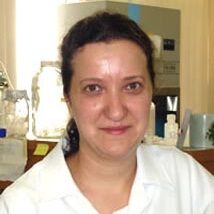
Maria Izabel Chiamolera
THE PROLINE IN CODON 452 OF THYROID RECEPTOR b (TR b ) PLAYS A CRITICAL ROLE IN THE INTERACTION WITH COREPRESSOR AND COACTIVATOR MARIA IZABEL CHIAMOLERA, RUTNÉIA P. PESSANHA, GUSTAVO B. BARRA, LUCAS BLEICHER, IGOR POLIKARPOV, FRANCISCO A. R. NEVES, RUI M. B. MACIEL
Federal University of São Paulo (MIC, RMBM); University of Brasília (RPP, GBB, FARN); Physics Institute of São Carlos, University of São Paulo (LB, IP); Brazil
SUMMARY
All mutations of Thyroid Receptor b (TRb) observed in Resistance to Thyroid Hormone (RTH) are in the receptor’s ligand-binding domain (LBD). The 12 helixes of this domain formed an hydrophobic pocket where the ligand is deeply buried. Upon ligand binding, the carboxy-terminal (Helix 12) undergoes major conformational changes, from a more open conformation to a closed one, resulting in dissociation of corepressor and formation of a surface that may determine whether coactivators can interact with TR, an essential requirement for TR transactivation function.
In the present study, we report and characterize a novel mutation in a patient with RTH, P452L, using conventional molecular methods including T3-binding assay, transient reporter gene transfection analysis in positive and negative regulated gene, glutathione-S-transferase (GST) pull-down assay, EMSA and homology modeling of the protein.
At the luciferase assays, P452L exhibited a significant transcriptional impairment in both positive (DR4 and F2) and negative regulated genes (TRH) and did not recovered its transcriptional activity, even at supramaximal doses of T3, as other mutant (A317V) despite the fact that T3 binding in both mutants was similar. The gel shift with in vitro produced labeled proteins, performed in DR4 and F2 response elements, showed simila bind to DNA and formation of complexes betwen P452L mutant and wild type.In GST pull down assay, P452L failed to completely release the corepressor binding and exhibited almost no binding to the coactivator.
Because our results demonstrated that this mutant was disrupting coactivator interaction we decided to study better our protein structure using Computer modelling by homology with hTRb complexed with GRIP1, more than 100 models were constructed with the Modeller progam, and validated using specific softwares, but unfortunetaly, at computer model we could not demonstraded great changes in TR structure. So crystal structure will be important to answer these structural questions.
In conclusion, similar to P452L, the 453 and 454 mutants failed to release the co-repressor and was unable to interact with co-activator in the presence of T3. The lack of T3 response in modulation of P452L transcriptional activity could not be attributed only to its reduced T3 binding affinity, but also to a disruption in the interaction with co-regulators Otherwise, the failure in repression of negative regulated genes could be explained by the abolished interaction with the coactivators as it was recently described by Ortiga-Carvalho et al. Therefore, we suggest that prolines 452 and 453 could cause the same effect in TR structure, disturbing the interactions with both coactivator and corepressor not only by alteration in T 3 binding, but mostly because both prolines may be responsible for a hinge function of helix 12, allowing its movement into the body of the LBD, inducing corepressor release and the formation of a coactivator interaction site.

Alejandra Dagrosa
TREATMENT OF UNDIFFERENTIATED THYROID CARCINOMA BY BORON NEUTRON CAPTURE THERAPY
A. Dagrosa *, M. Viaggi*, J. Longhino **, O. Calzetta **, M. Edreira*, R. Cabrini *, G. Juvenal*, M. Pisarev* and ***
Dept. Of Radiobiology, Constituyentes Atomic Center; ** RA-6, Bariloche Atomic Center, CNEA,*** Dept. Of Biochemistry, Univ. of Buenos Aires School of Medicine, Argentina
SUMMARY
Undifferentiated thyroid carcinoma (UTC) lacks an effective treatment. Boron neutron capture therapy (BNCT) is based on nuclear reaction 10B(n, a )7Li. These particles destroy the tumor locally due to their high linear energy transfer (LET). In previous studies we have shown that mice transplanted with the human cell line of UTC, ARO have a selective uptake of 10BPA. These results lead us to perform the complete BNCT procedure. Nude mice bearing UTC tumors were treated with BNCT (350 and 600 mg/kg b/w. of BPA). After 35 days of follow-up, we observed that the tumor continued to grow in control and NCT groups. A slow-down in tumor growth was observed in all animals of BNCT (350 mg/kg b/w. of BPA) group and a complete stop of tumor growth in 100% of animals of BNCT (600 mg/kg b/w of BPA) group, while a complete cure was observed in 50% of the mice with an initial tumor volume lower that 50 mm3. The comet assay showed a dose-dependent increased in DNA damage. These data show that UTC is amenable to the treatment by BNCT.

Marcia Puñales
CLINICAL PRESENTATION AND NATURAL COURSE OF MULTIPLE ENDOCRINE NEOPLASIA (MEN) 2A OF HETEROZYGOTES IN RET CODON 634 MUTATION
Puñales MK, Graf H1, Gross JL and Maia AL.
Endocrine Division, Hospital de Clínicas de Porto Alegre, Universidade Federal do Rio Grande do Sul, Porto Alegre, RS, and Serviço de Endocrinologia e Metabologia do Paraná (SEMPR), Universidade Federal do Paraná, Curitiba, PR1, Brazil
SUMMARY
Genetic testing for germline mutations in the RET proto-oncogene has become available and today forms the basis for MTC screening procedures. Early prophylactic thyroidectomy must be considered to ensure definitive cure. However, no universal consensus exists as to the optimal timing and extent of prophylatic surgery in these patients. A recent study has proposed a division of hereditary MTC into three risk groups, based on age at disease onset and genotype: high risk group, codon 634 and 618 mutations; intermediate risk group, codon 790, 620 and 611 mutations; and low risk group, codon 768 and 804 mutations. Our group established a protocol for molecular analysis of hereditary medullary thyroid carcinoma (MTC) in southern Brazil, in 1997. Seventeen independent families with RET germline mutation have been identified. Because neither molecular diagnosis nor the pentagastrin test were available before the establishment of this protocol, we had the opportunity to observe a large number of patients in whom the disease has evolved naturally without medical intervention, namely prophylactic thyroidectomy. We observed a wide spectrum in terms of clinical presentation and natural course of the disease even among genetically-related individuals. Sixty-nine individuals from 12 different families presented a codon 634 mutation, the most prevailing missense mutation in our series. The specific mutations identified were C634Y (n=49), C634R (n=13), and C634W (n=7). Individuals with the C634R mutation presented significantly more distant metastases at diagnosis than subjects with the C634Y or C634W mutations (54.5% vs. 19.4% vs. 14.3%, respectively, P=0.03). Further analysis of the estimated cumulative frequency of lymph node and/or distant metastases by Kaplan-Meier curves showed that the appearance of lymph nodes and metastases occurred later in patients with C634Y than in those with C634R (P=0.001). These results suggest that specific nucleotide and amino acid exchanges at codon 634 might have a direct impact on tumor aggressiveness in MEN 2A syndrome and it should be take into account when considering timely prophylactic thyroidectomy to gene carriers.

Gisele Giannocco
UP-REGULATION OF MYOGLOBIN (MB) GENE EXPRESSION BY THYROID HORMONE (T3) IN RAT CARDIAC MUSCLE: POSSIBLE INVOLVEMENT OF E-BOX-ASSOCIATED PROTEINS. Gisele Giannocco., Rosangela A. Santos, Maria Tereza Nunes. Department of Physiology and Biophysics, ICB1, University of São Paulo, São Paulo, Brazil.
T3 markedly increases heart function. Considering that Mb gene is highly expressed in the heart, improving O2 diffusion and mitochondrial respiration, we investigated if T3 is involved in Mb gene expression and if DNA binding activity of nuclear proteins are altered by T3 using E- box consensus sequence as a probe. Time-course studies were performed in euthyroid and thyroidectomized (Tx) rats treated, or not, with 100 ug/100 g of T3, BW, iv, for 30, 60, 120 min, 6 and 24 h. Rats were killed by decapitation; nuclear and cytosolic protein from ventricular (V) muscle were isolated. The cytosolic protein was electrophoresed and the Mb abundance were determined by western blot, using a laser-scanning densitometer. Nuclear protein was used to perform the electrophoretic mobility shift assays (EMSA). It was shown that Mb expression is under T3 control in V muscle, as indicated by decreased Mb protein content in Tx rats. The time-course study showed a progressive increase in the Mb protein abundance, as early as 30 min, which exceeded the control levels at 24 h of the T3 treatment. EMSA showed an enhanced capacity of nuclear proteins to bind the E-box probe after T3 treatment while Tx rats displayed a diminished binding. The present results showed that (1) Mb protein and, as previously shown, mRNA content are influenced by T3 and (2) T3 enhanced the binding capacity of E-box- associated proteins in rat cardiac muscle.

Janete Maria Cerutti
ANÁLISE DA EXPRESSÃO DOS GENES DE RESISTÊNCIA À MÜLTIPLAS- DROGAS MDR1 E MRP E A CORRELAÇÃO COM MUTAÇÕES NO GENE TP53 EM CARCINOMAS DA TIRÓIDE.
1 Cerutti JM, 2Kimura E, 2 Ebina KN e 1 Maciel RMB.
1 Laboratório de Endocrinologia Molecular, Disciplina de Endocrinologia, UNIFESP, São Paulo, 2 Departamento de Histologia & Embriologia, ICB-USP,São Paulo, SP, Brasil.
A agressividade e a refratariedade à terapêutica do carcinoma indiferenciado de tiróide (CIT) tem sido um dos grandes desafios no tratamento de cancer de tiróide. A análise de diferentes tipos de tumores revelou que a resistência ao tratamento tem sido associada a superexpressão da proteína codificada pelo gene de resistência à drogas-múltiplas (MDR1) que funciona como uma bomba de efluxo para vários agentes quimioterápicos. Outro mecanismo pelo qual as células podem adquirir resistência ao tratamento com drogas é através da superexpressão da proteína MRP. Estudos in vitro sugerem que o gene MDR1 é regulado negativamente pela proteína P53 e que a perda da função pode induzir à um aumento na transcricão do gene MDR1. Com o objetivo de melhor caracterizar o potencial biológico dos CIT, analisamos a expressão do gene MDR1 e correlacionamos estes achados com a presença de mutações no gene TP53 que é frequentemente mutado neste subtipo tumoral. Neste estudo foram analisados CIT (n=4), Ca papilífero (n=10), Ca folicular (n=4), tiróide Normal (n=3) e linhagens celulares derivadas de Ca Papilífero (NPA), Ca Folicular (WRO), CIT (ARO). A expressâo de MDR1 foi analisada por RT-PCR, e a pesquisa de mutação no gene TP53 por sequenciamento. O gene MDR1 apresentou menor nível de expressão nos CIT aonde foram identificadas mutações no gene TP53, quando comparado aos carcinoma diferenciados e controle normal. Também analisamos, utilizando imunohistoquímica a expressão da proteína MRP nas linhagens ARO, NPA e WRO e verificamos uma correlação entre um aumento da expressão desta proteína na linhagem ARO. Estes achados mostram que a expressão aumentada de MRP pode estar associadada à refratariedade terapêutica nos CIT. E ainda, embora a literatura tenha sugerido que a proteína P53 normal seja responsável pela repressão do gene de MDR1, observamos que 2 dos CIT com mutaçao de TP53 e expressâo diminuída de MDR1, não indicando uma associação TP53-MDR1.

Leonardo Bazzara
INVOLVEMENT OF THE cGMP PATHWAY IN THE INHIBITION OF THE IODIDE UPTAKE AND THE EXPRESSION OF THYROID SPECIFIC GENES IN FRTL-5
Bazzara LG, Costamagna ME, Cabanillas AM, Velez ML, Fozzatti L, Masini-Repiso AM.
Depto. de Bioq. Clínica, Fac. de Cs. Químicas, Universidad Nacional de Córdoba, Córdoba, Argentina.
Previous reports indicated that nitric oxide (NO) inhibits the iodide uptake in several species and the thyroperoxidase (TPO) mRNA expression in FRTL-5 cells. This work was aimed to analyse the role of the guanylyl cyclase/cyclic GMP (cGMP) pathway in the inhibitory effect of NO on siodide uptake and in the expression of TPO and hyroglobulin (TG) mRNA in TSHt (500 mU/ml)-stimulated increased cGMP levels s(RIA) in a concentration and time-dependent manner (Table 1). The cAMP level (RIA) decreased after 48 h of incubation with 500 mM SNP and was not modified at shorter times and lower SNP concentrations. An increase of cGMP was induced by TSH (Table 1). The inhibition exerted by SNP or 8-Br-cGMP for 24 h on the iodide uptake (131I) was reversed by KT-5823 (1-10 mM), an inhibitor of thecGMP-dependent protein kinase (PKG) (Table 2). The TPO and TG mRNA expression (Northern-blot) was significantly reduced by 8-Br-cGMP. Data (24 h) were (Absorbance ratio mRNA/18 S rRNA, mean±SEM, arbitrary units): Control (C): TPO= 2.00, TG= 2.00; 8-Br-cGMP 100 mM: TPO= 1.97±0.24, TG= 1.96±0.03; 300 mM: TPO= 1.56±0.13, TG= 1.23±0.16**; 1000 mM: TPO= 1.22±0.29*, TG= 1.01±0.26** (*P<0.05, **P<0.01 vs C; n=3, ANOVA, Student-Newman-Keuls test). In conclusion, an activation of PKG seems to be involved in the NO/cGMP-induced inhibition of iodide uptake in FRTL-5. A reduction in the cAMP production could be relevant in the action of high NO/cGMP levels. Evidence is provided for a role of the cGMP pathway in the regulation of thyroid specific genes.
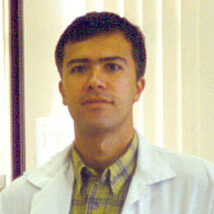
Magnus R.Dias da Silva
GENETIC AND CLINICAL ASPECTS OF THYROTOXIC PERIODIC PARALYSIS (TPP).
Silva MRD, Cerutti JM, Tengan CH, Gabbai AA, Maciel RMB. Laboratory of Molecular Endocrinology, Division of Endocrinology, Department of Medicine and department of Neurology, Escola Paulista de medicina, Universidade Federal de Sao Paulo.
Contact: silvamagnus@gmail.com
TPP is a subtype of Hypokalemic Priodic Paralysis (HoPP) characterized by attacks of intermittent muscle weakness during hypokalemia and thyrotoxicosis; the symptoms of paralysis are very similar in both forms. TPP, however, appears always in the sporadic form, shows complete remission after the treatment of thyrotoxicosis and 90% of patients have oriental ancestry (albeit cases from other ethnic groups were also described). Its pathogenesis is unknown; however, the almost identical clinical features of TPP and HoPP may indicate that both diseases share the same molecular defect.
Recently, in families with HoPP, two kinds of mutations have been located in the calcium channel of the skeletal muscle membrane: Arg528His and Arg 1239His. Among 29 patients with HoPP in our clinic, TTP was confirmed in 15 patients, being 13 in the sporadic form and, for the first time in the literature, in 2 family members(father and son). All patients are male, have had attacks of weakness accompanied by thyrotoxicosis and hypokalemia, 5 have relativies with thyroid disease and 2 oriental ancestry. Resting after hard exercise as the precipitaing factor was reportd by 4 patients and none after large carbohydrate load. In on patient we found a positive family history of TPP, his father affected being 30 years before. All patients had signs or symptoms of thyrotoxicosis such as weigth loss, tremor and tachycardia; 10 had midly increased thyroid gland; although the patients had clinical signs of thyrotoxicosis, this diagnosis, however, was made only after the attacks of weakness. Thyroxicosis was due to Graves’ disease, confirmed through autoantibodies and radiodine uptake. After euthyroidism, reached with treatment with anti-thyroid drugs or radioiodine, all patients recovered completely from the attacks of paralysis. The search for those 2 mutations described in HoPP families by restriction fragment length polymorphism (RFLP analysis) we negative in all 15 patients.
In conclusion, our study shows that TPP is a frequent form of periodic paralysis (52% in our series), affects also non-oriental patients and shows discrete forms of thyrotoxicosis; in addtion, we describe for the first time a familial case of TPP. Furthermore, despite a complete clinical similarity with the familial HoPP it is not linked to the same genetic defect.

Tania Maria Ortiga Carvalho
ACUTE EFFECT OF THYROID HORMONES ON PITUITARY NEUROMEDIN B
Carvalho , Ortiga Maria Tania ; Professora adjunta do Instituto de Biofísica – UFRJ ; Instituto de Biofisica Carlos Chagas Filho Universidade Federal do Rio de Janeiro CCS- bloco G – Cidade Universitaria Ilha do Fundão – Rio de Janeiro CEP: 21949-900 – RJ – Brasil.
E-mail:taniaort@biof.ufrj.br
mRNA Neuromedin B (NB) is a bombesin-like peptide, highly concentrated in the pituitary gland, that has been shown to have an inhibitory action on TSH secretion, probably acting as a paracrine/autocrine regulator. It has been demonstrated taht pituitary NB and its mRNA are decreased in hypothyroid rats. We had shown earlier (Reg Pep 67:47, 1996), that a single dose of thyroid hormones given tp hypothyroid rats requires few hours to increase pituitary NB content above euthyroid levels. Here we evaluated if this fast response to thyroid hormones is time correlated to changes in NB mRNA abundance. Male rats, weighing 250-300 g were divided in groups of 5 animals each. All groups, except one (normal), received 0.03% methimazole in the drinking water during 3 weeks. In experiment I, triiofothyronine (T3)-0.4 µg/100 g B.W. (sc.) was given 3, 1or 1/2 h before sacrifice. In experiment II, thyroxine (T4)- 0.8 µg/100g B.W. was given 24, 6 or 3 h before sacrifice. Rats were decapitated, anterior pituitary were removed and total RNA was extracted. NB mRNA was determined by RNase protection assay. Serum (s)TSH was measured by specific RIA (NIDDK). In experiment I, 3 hours after a single in injection of T3, NB mRNA was almost 50 % higher than euthyroid group and sTSH was significantly decreased when compared with hypothyroid rats (3h: 13.4+/- 1.1; hypo: 26.3+/-2.9 ng/ml, p<0.05). In experiment II the peak response to T4 was at 6 hours after its injection, when NB mRNA content maximally increased (185%) compared to nomarl rats. The time pont of peak mRNA abundance are coincident with those reported to the peptide content, which is a further evidence are coincident with those reported to the peptide content, which is a further evidence of NB importance as a new regulatory path involved in acute inhibitory effect of thyroid hormone on TSH secretion.
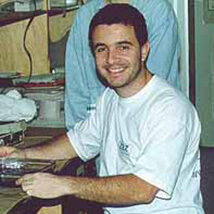
Marcelo Branco
Evidence favoring an independent role of T3 on the expression of uncoupling protein in the brown adipose tissue of rats.
M. Branco and A.C. Bianco. Department of Physiology and Biophysics, Institute of Biomedical Science, University of São Paulo, Brazil.
e-mail: mbranco@bmb.icb1.usp.br

Claudia G. Pellizas
La administración de factor de crecimiento insulino símil tipo I (IGF-I) a la rata disminuye el número de receptores nucleares hepáticos de triiodotironina (T3) y los niveles de su ácido ribonucleico mensajero (ARNm).
Pellizas, C.G; Coleoni, A.H.; Costamagna. M.E.; Di Fulvio, M. y Masini-Repiso, A.M. Dpto. Bioq. Clínica. Fac. Cs. Qcas. UNC. Córdoba, Argentina.
e-mail: claudia@fcq.uncor.edu
